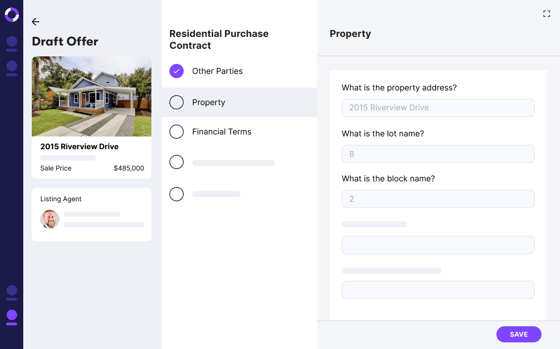
As a Realtor, you're likely familiar with the ins and outs of purchasing and selling real estate. However, rentals can be a whole different ballgame. Whether you're new to the rental market or just looking to brush up on your knowledge, understanding the key differences between rental transactions and purchase transactions is crucial to your success as a Realtor working with rentals. In this post, we'll explore some of the most important differences between rentals and purchases, including the type of clients you'll work with, the timeline of transactions, and the role of leasing agreements.
Types of Clients
 One of the biggest differences between rental transactions and purchase transactions is the type of clients you'll work with. While purchase transactions typically involve individual buyers or families on both sides of the transaction, rental transactions are different.
One of the biggest differences between rental transactions and purchase transactions is the type of clients you'll work with. While purchase transactions typically involve individual buyers or families on both sides of the transaction, rental transactions are different.
Residential rental transactions involve renters instead of buyers. Renters may be looking for a place to live temporarily or may be new to the area and not ready to commit to a purchase. As a Realtor, you'll need to understand the specific needs and preferences of renters, such as the type of property they're looking for, the length of the lease, and their budget. A lot of this does indeed overlap with the types of things you would need to know about a buyer. So if you are already good at drilling down and locking on to your client's needs, you should have no problems here.
On the other side of the coin, though, landlords are the primary clients in rental transactions, whereas sellers are the primary clients in purchase transactions. Landlords may own one or multiple rental properties and are looking to fill vacancies and generate income. A seller, on the other hand, typically will no longer be associated with the property in any way after the transaction. As a Realtor, you'll need to understand the landlord's priorities, such as finding reliable tenants and managing maintenance issues.
Timeline of Transactions
Another key difference between rentals and purchases is the timeline of transactions. While purchase transactions can take a month or two, or more, to complete, rentals often have a much shorter timeline. Tenants may need to move into a property quickly, so it's important to have a streamlined process for showing properties, processing applications, and executing leases. You'll also need to be prepared to handle turnovers and vacancies on a regular basis.
Role of Leasing Agreements
In purchase transactions, the role of the purchase agreement is well-established. However, in rental transactions, the leasing agreement is the primary legal document that governs the landlord-tenant relationship. As a Realtor, you'll need to be familiar with the standard clauses and provisions of leasing agreements, including rent payments, security deposits, maintenance responsibilities, and termination clauses. You'll also need to be able to explain these provisions to your clients and ensure that their interests are protected. And, just like with a P&S transaction, you should use standard board-approved documents.
Marketing Strategies
 Marketing rental properties requires a different approach than marketing properties for purchase. With rentals, you'll need to focus on reaching potential tenants through rental listing websites, social media, and local advertising channels. There may be some very effective local channels you can utilize, too. You'll also need to be able to differentiate your client's property from others in the area, highlighting its unique features and amenities. This, of course, is similar in structure to what you would do to market a property for sale. And, you will likely even list the property on the MLS. But remember that renters may be searching in different places than renters and they also will be looking for different features in the property.
Marketing rental properties requires a different approach than marketing properties for purchase. With rentals, you'll need to focus on reaching potential tenants through rental listing websites, social media, and local advertising channels. There may be some very effective local channels you can utilize, too. You'll also need to be able to differentiate your client's property from others in the area, highlighting its unique features and amenities. This, of course, is similar in structure to what you would do to market a property for sale. And, you will likely even list the property on the MLS. But remember that renters may be searching in different places than renters and they also will be looking for different features in the property.
Rental, Leases, and Tenant Screening Software
It's likely that your current tech set up doesn't support a rental business. Or, it at least doesn't support it well. You should look for platforms, like Jointly, that support both P&S as well as rentals. Make sure it supports tenant screening, as well. This is another big difference with rentals—you will likely need to support the "buyer qualification" process. Tenants don't need to apply for financing. But they do need to go through a credit report/background check. Make sure your software provides that service for the landlord.
Conclusion
Rentals and purchases each present unique challenges and opportunities for Realtors. Understanding the key differences between these two types of transactions is crucial to your success in the rental market. By tailoring your approach to the unique needs of your clients, streamlining your rental process, familiarizing yourself with leasing agreements, and developing effective marketing strategies, you can establish yourself as a trusted and successful Realtor in the rental market.






